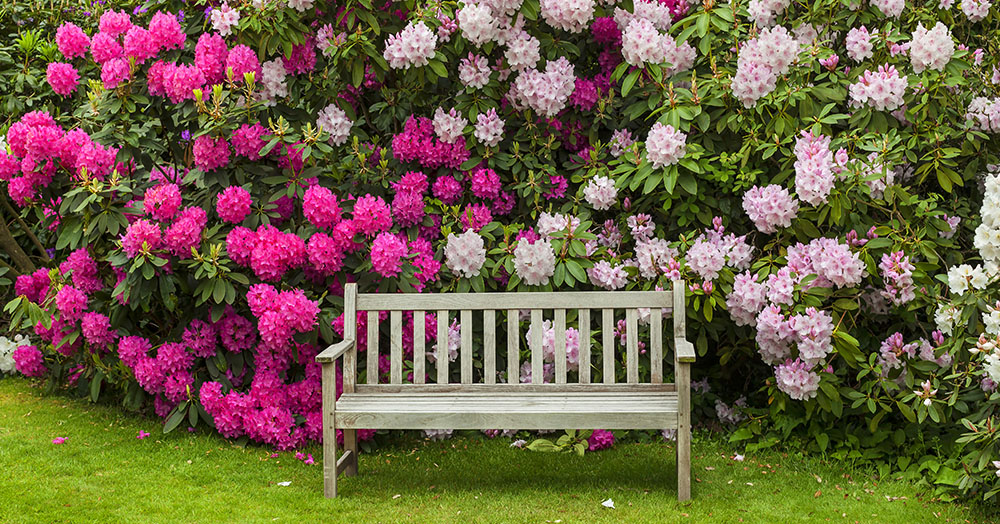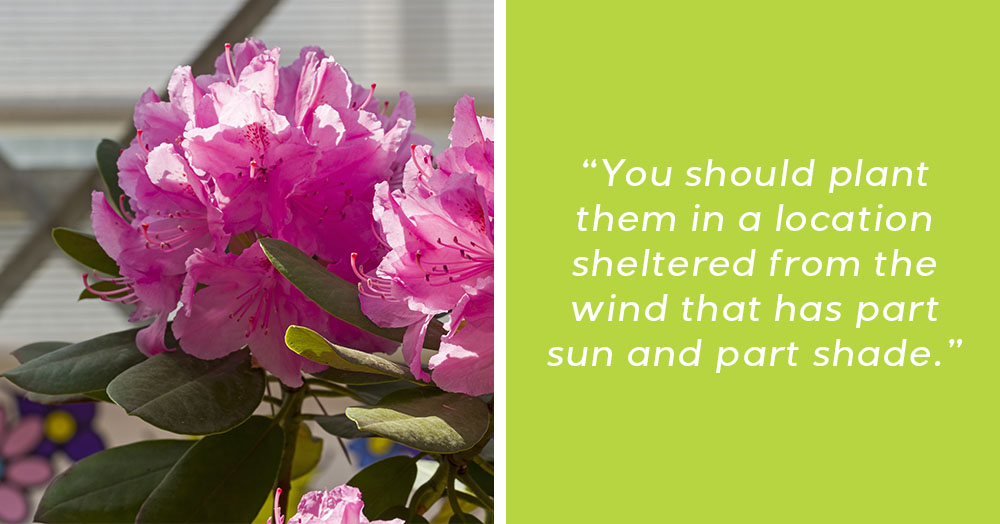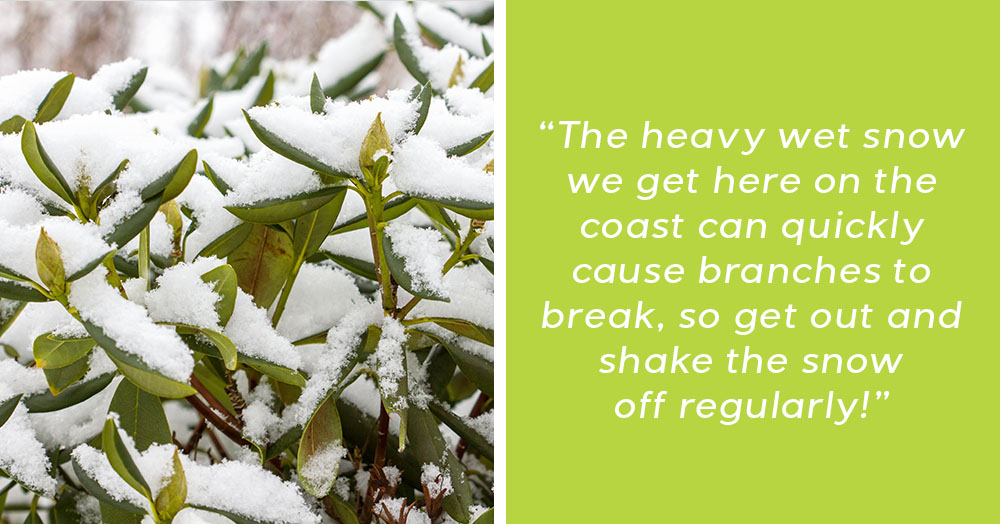Top Tips For Caring For Your Rhododendrons
Rhododendrons are a gorgeous addition to any Powell River yard. If you stay dedicated to caring for your rhododendron, it will reward you with loads of lush blooms for many years to come. There are thousands of rhododendron cultivars out there, so it’s a good idea to have a look around at a few different types to find your favourite before you bring one home.
Rhododendrons come in various colours, including red, purple, yellow, white, and pink. Blooming in spring, their famously showy flowers will decorate your landscape for several weeks. For the rest of the year, their lush dark green leaves are a beautiful addition to the landscape.

What’s the difference between rhododendrons and azaleas?
Rhododendron and azalea are two plants that are often confused. It’s an easy mistake to make, they’re both classified in the same genus, and collectively, there are over 20,000 hybrids. But, there are a few differences that can help you tell them apart:
Rhododendrons
- Usually evergreen
- Have thick leathery leaves
- Have ten or more stamens per flower
- Feature bell-shaped flowers that grow in clusters
Azaleas
- Can be evergreen or deciduous
- Have narrow thin, and slightly hairy leaves
- Have five stamens per flower
- Feature trumpet-shaped flowers grow individually.
Tips for Planting Rhododendrons
The best time for planting rhododendrons is in the spring or early fall. You should plant them in a location sheltered from the wind that has part sun and part shade; ideally, shade should be in the afternoon to protect them from the hottest part of the day.

Rhododendrons need moist, rich, well-drained, acidic soil. Sandy loam with plenty of organic matter is ideal. If the soil is not acidic, the leaves may start to turn yellow. You can sprinkle elemental sulphur over the root zone annually to help acidify the soil. Mulching with wood chips, pine needles, or shredded oak leaves can also help. Rhododendrons have very shallow roots, so a thick layer of mulch over the root zone is essential to keep them from drying out.
Caring for and Pruning Rhododendron
Caring for your rhododendron is a bit more involved than what you might need to do for other shrubs, but it’s worth it. Once it is well established, you can cut back your care routine quite a bit.

Rhododendrons only need supplementary watering during extended drought periods. It is important to make sure to give them a few good soaks in the fall before the ground freezes so that they have enough stored water to survive the winter.
In the winter, you’ll want to keep an eye on your rhododendrons when it snows. The heavy wet snow we get here on the coast can quickly cause branches to break, so get out and shake the snow off regularly!
When your plant is still young and small, you can choose to wrap it in burlap for winter if you wish. Caring for your rhododendron by wrapping it will help prevent any winterkill and make it less likely for snow load to bend or break its branches.

To get a full, bushy shape, you’ll need to perform annual pruning. Taking off about 10% of the plant material every year will help it develop that luscious, voluminous look. The best time to prune your rhododendron is just after it has finished flowering.
Rhododendrons don’t need very much fertilizer. You can apply a complete fertilizer designed for acid-loving plants in early spring, but be very careful; most acid fertilizers will have recommendations specifically for rhododendrons and azaleas. Too much fertilizer can damage the roots and cause deformed leaves. Do not use a bloom fertilizer on rhododendrons unless a soil test indicates that your soil is phosphorus-deficient.
Stop by Mother Nature today, and check out the beautiful assortment of rhododendrons and azaleas we have in stock. We can recommend cultivars that will suit your yard and provide tips to keep them colourful for years to come!

